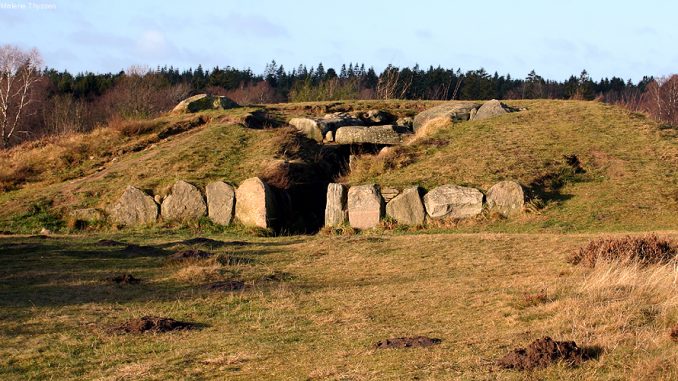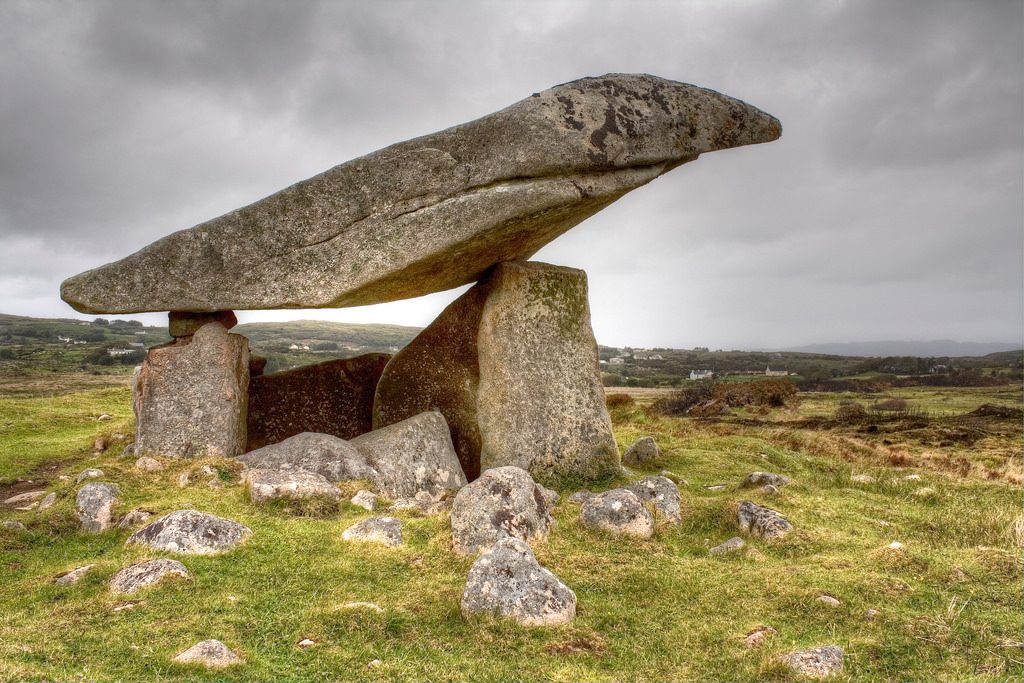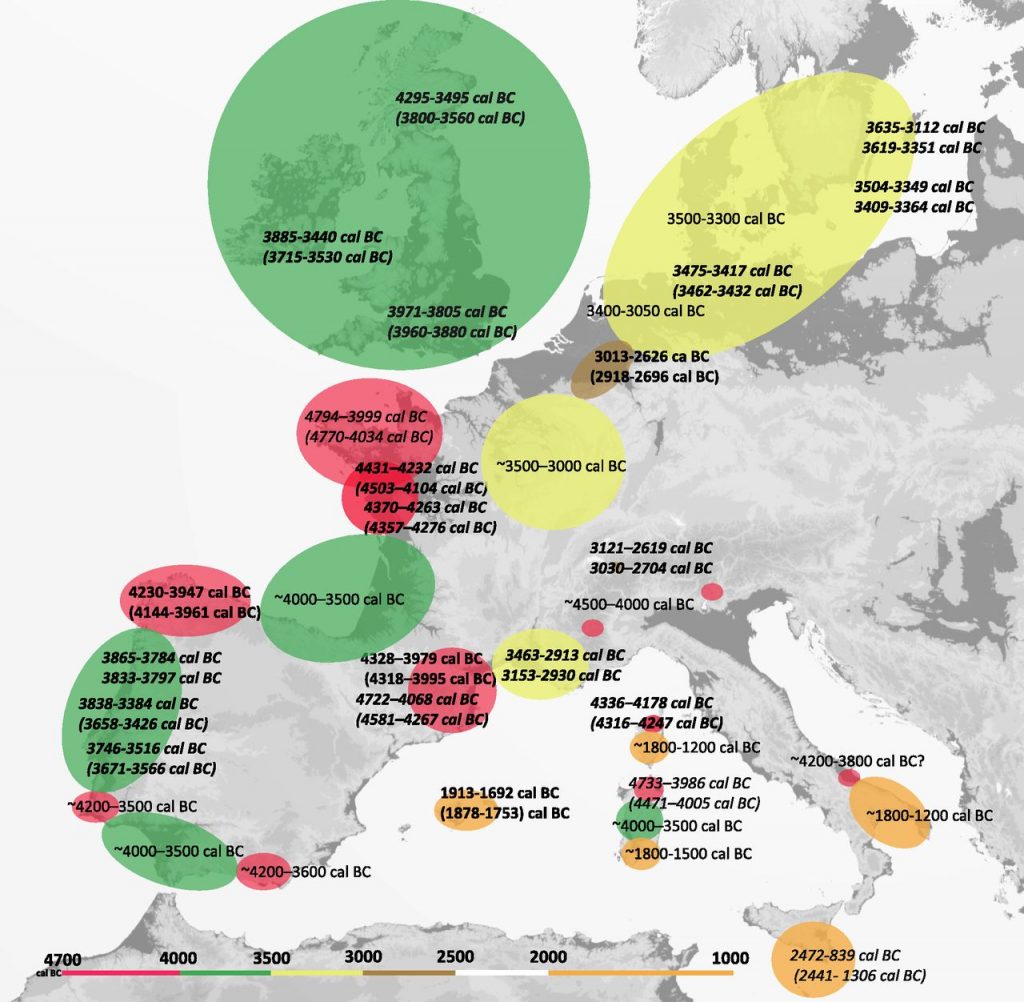
Bayesian statistical analysis of 2,410 radiocarbon dates shows some interesting patterns concerning the spread of megalithic architecture.
After analyzing data associated monumental grave architecture and standing stones along coastal regions of Europe and the Mediterranean, archaeologist Bettina Shulz Paulsson, proposes that the idea of megaliths originated in northwest France and was transferred as far away as the Mediterranean.
Paulsson, an archaeologist for the University of Gothenburg, writes in the February 11, 2019 issue of PNAS (Proceedings of the National Academy of Sciences) that there are about 35,000 known megaliths that still exist in Europe.

These “megaliths” (from the Greek, mégas and lithos, or large stones) are found in stone circles, standing stones, various stone alignments, tombs called dolmens, and buildings and temples. Most were erected during the Neolithic and just after but their purposes, origins, and the cultures that created them were largely forgotten through time. Since the Bronze and Iron Ages, megaliths have presented as a mystery and that certainly hasn’t changed today.
Many modern books are available that discuss megaliths that range in approach from the purely scientific to the New Age and spiritual. Fringe archaeology seems to have a particular love affair with megaliths and internet media like Youtube videos are being produced on the topic regularly. The fringe even put on conferences that mimic scientific conferences in many ways, including the reading and presentation of papers to peers. The major difference, of course, is adherence to scientific methods and standards. And, among the fringe, megaliths are nearly always nodes along ley lines.
Fringe appeal aside, however, megaliths are very real remnants of long-dead cultures that are seriously studied in archaeology. Until now, there have been two competing ideas about how these megaliths came to be. In the late 1800s and early 1900s, it was generally accepted that megaliths diffused into Europe from the Near East with the idea traveling through the Mediterranean and along the Atlantic coast.
In the 1970s, a new idea came into favor, which was that megalithic architecture developed independently in the various regions of Europe.
Now, however, Paulsson has a new idea supported by Bayesian statistical analysis applied to 2,410 available radiocarbon dates collected from megalithic, partly megalithic, and non-megalithic (but of the same relative periods and regions) sites. The results of her analysis shows that when it comes to megalithic graves, they all show up in the archaeological record in a period of about 200-300 years during the Neolithic, specifically during the second half of the fifth millennium BCE.
What’s more, it appears that the megalithic idea made its way from northwest Europe, along the Atlantic coast, and all the way to the Mediterranean in three phases.

The first phase was at around the second half of the fifth millennium BCE when megaliths in small clusters are used as graves during a time when other graves of their regions are in the form of pit burials and hypogea (“dug out subterranean burial chambers”).
The second phase happened around the first half of the fourth millennium BCE. Thousands of passage graves show up on the landscape along the Atlantic coasts of Spain/Portugal, Ireland, Scotland, England, and France.
The third phase is begins during the second half of the fourth millennium BCE as the idea of passage graves reaches Scandinavia and northern Germany, Poland, and, perhaps, the Netherlands and along the Mediterranean coast where France an Italy come together.
Passage graves mark what Paulsson calls a “radical change of burial rites, along with other economic and social changes in Europe.” She also notes that for these ideas to travel so far at such a fast rate, that the “maritime skills, knowledge, and technology” required by the cultures associated with the megaliths must have been much higher than previously assumed.
There’s hardly any doubt that her work will spark some debate and discussion among those interested in megaliths from both the scientific and the fringe sides of archaeology. And it will be interesting to see if future work in these regions and periods will produce data consistent with Paulsson’s findings.
Further Reading
Paulsson, Bettina Shulz (2019). Radiocarbon dates and Bayesian modeling support maritime diffusion model for megaliths in Europe. PNAS, 201813268; DOI: 10.1073/pnas.1813268116
Hello
I enjoyed your article, though I found it slightly narrow in terms of the scope used to support its conclusion.
How can your argument accommodate the findings at Gobekli Tepe?
Surely this would perhaps suggest that the view held in the late 1800s and early 1900s is accurate, that knowledge of megalithic architecture came from the east. Or are you suggesting megalithic sights appear sporadically with no apparent connection?
Kind regards
Harry
I don’t think I’ve made or suggested any argument that conflicts with Gobekli Tepe or what’s currently known about it.
The author of a the article discussed hypothesized that European megaliths have a common origin (Paulsson, Bettina Shulz (2019). Radiocarbon dates and Bayesian modeling support maritime diffusion model for megaliths in Europe. PNAS, 201813268; DOI: 10.1073/pnas.1813268116). I’m just reporting on it here. I tend to think she has a point though.